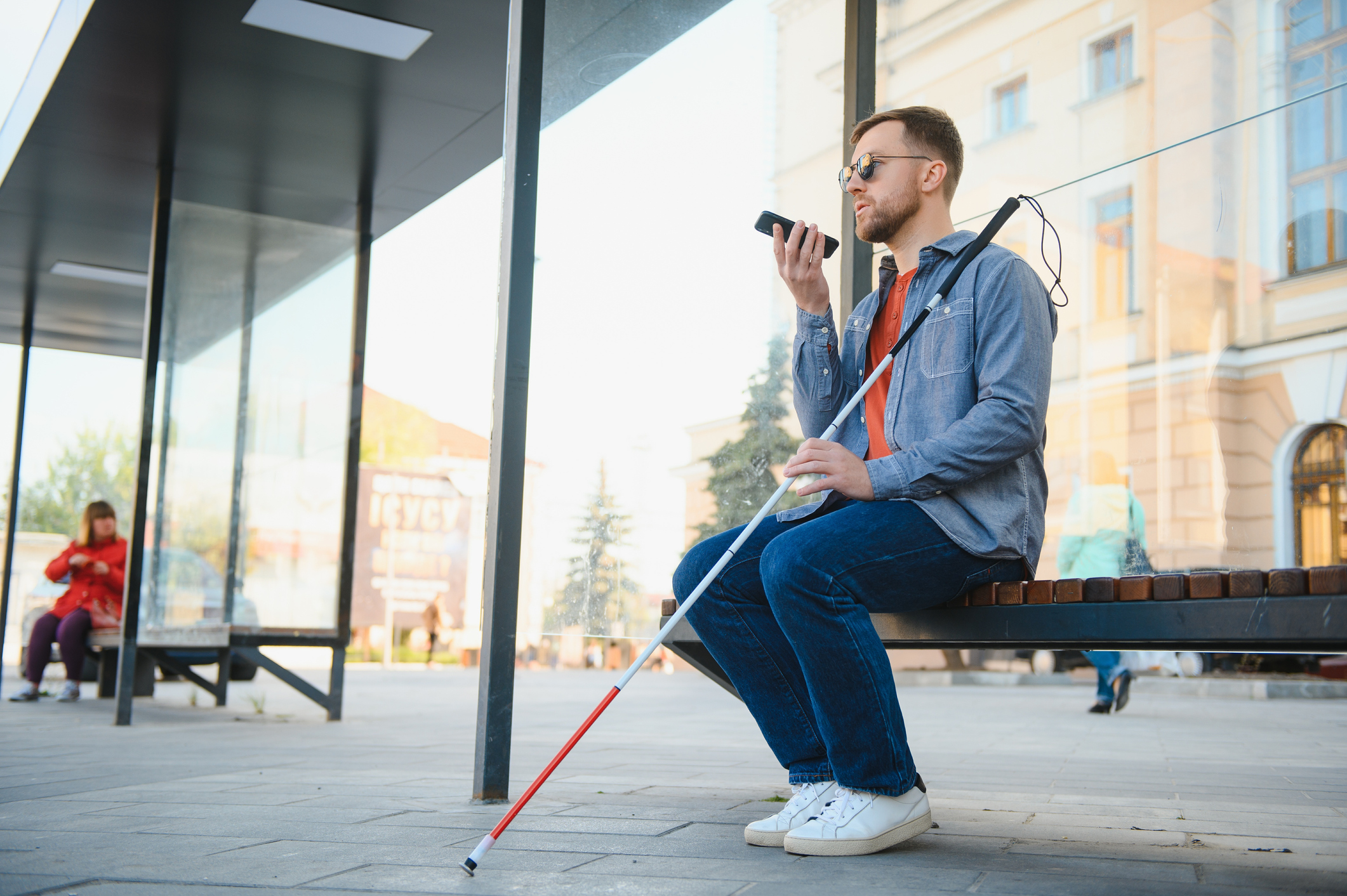State of Colorado Accessibility Newsletter - May 2025

Accessibility News
Rule Amendments Are Adopted
By Alice Huyler, Senior Policy Advisor, OIT Rulemaking
Earlier this year, OIT embarked on the rulemaking process to make clarifying amendments to Rules Establishing Technology Accessibility Standards, 8 CCR 1501-11 (rules). The amendments were adopted on May 9, and will become effective on June 30, 2025. We appreciate all the great feedback provided by state agencies and employees throughout this process. The revised rules will become permanently effective on June 30, 2025.
The rules define accessibility standards for government IT systems to improve usability for people with disabilities. The amendments address stakeholder challenges, ensure ease of access to help, use of the best technology standards, adherence to federal and state laws, and making accessibility a standard part of the way we do things. Key provisions include:
- Allowing government entities to improve accessibility over time. Government entities can comply by posting an accessibility statement on their website and meeting at least one or a combination of the five following options: 1) WCAG compliance, 2) offering alternate versions, 3) providing reasonable accommodations or modifications, 4) demonstrating progress on accessibility improvements, and 5) choosing the technology that best meets accessibility standards and business needs.
- Undue burden is available when technology doesn’t fit into an exception and the government entity is unable to meet any of the five options for compliance.
- Requiring public entities to clearly direct users on how to report accessibility issues.
- Defining limited exceptions from technical standards, mirroring existing federal exceptions, which guide public entities on how to prioritize their accessibility work.
You can read a summary of the rules on the OIT Hearings and Rulemaking webpage and find guidance, templates and support materials on the Technology Accessibility Program (TAP) webpage and the Plain Language Guide. TAP will continue to publish additional guidance over the coming weeks. If you have any questions, email oit_rules@state.co.us.
Sign up to receive notifications about OIT’s rulemaking efforts.
Celebrating the Aira ASL Pilot
OIT's partnership with the Colorado Department of Labor and Employment (CDLE) in a pilot program for Aira ASL is already a success. Just one month into the four-month pilot, customers have used Aira ASL at 10 CDLE offices, including vocational rehab and workforce centers, and usage continues to grow.
Aira ASL is a mobile app offering live American Sign Language interpreters that is free to use at CDLE locations through July 31. We hope that the pilot continues to expand and that other state agencies will soon be able to offer this incredible accommodation tool. Read more about the Aira ASL pilot.
Accessibility Essentials
In the Documents World, HTML is King
By Rosa Calabrese, TAP Senior Accessibility Trainer
Document accessibility is a major topic of conversation as Colorado government entities move towards strengthening their accessibility practices. Document remediation in programs like Adobe Acrobat Pro and CommonLook can yield great results, but the process can sometimes be difficult and time-consuming. Changing documents from their current format into webpages can save you a headache when that possibility is available.
Of course, there are some documents that are required to stay in document format. But when that is not a requirement, consider changing them to HTML. A few points to note:
- Webpages can be edited and altered more easily than documents and won’t need to be remediated every time there is a slight change in content.
- Digital forms are easier to use and more accessible in HTML format than document format. Plus, webforms can be set up to collect responses in a spreadsheet in a way that document forms cannot.
- By changing documents into HTML format, you not only make them more accessible to people with disabilities, they are also more available to people on the go. While documents can be opened on mobile devices, the text does not always reflow well to fit the scale of the window, requiring mobile users to scroll back and forth.
Read more about Documents vs. Webpages and think about how your content could be made more accessible and easier to edit using HTML.

Lived Experiences
The Intersection of Mental Health and Accessibility
By Shana Boggs, Community Steering Committee (CSC) member
Technology has transformed the landscape of information access in numerous ways, such as readily available resources, community building and teletherapy. Teletherapy, for example, has impacted my journey with mental health by providing me with immediate access to a therapist during times of high anxiety, stress, and family crisis. I no longer have to endure the wait for an appointment, the lengthy intake process, or the travel to the therapist’s office. The relief of this immediate access has been so much greater in improving my mental health due to the ease, allowing for quicker understanding and immediate help.
Although technology provides easy access and immediate help, it can also be a barrier. Understanding how to navigate and use technology is still a skill many struggle with. Inaccessible applications present a barrier to accessing telehealth services. Internet access is also still difficult to obtain in areas, particularly in rural communities. By addressing any barriers, technology can be a great tool to enrich the lives of many people with disabilities.
However, navigating mental health using technology requires a balanced approach. It is not a replacement for fulfilling our other mental health needs, such as social connection, physical activity, and a sense of purpose. By being mindful of our technology use, we can foster a healthier relationship with ourselves and others. It's crucial to strike a balance of using technology to enhance our mental health support while being aware of its potential pitfalls.
Building In Accessibility
Staying Mindful of Cognitive Disabilities
By Kelly Tabor, TAP Communications Manager
May 15 was Global Accessibility Awareness Day (GAAD), a day to spread the word about accessibility and inclusion for the over one billion people with disabilities worldwide. While physical disabilities are often represented in our work, it's crucial to acknowledge and address cognitive ones, too.
Cognitive disabilities affect how individuals understand, process and remember information. These include learning disabilities like dyslexia or dyscalculia, Attention-Deficit/Hyperactivity Disorder (ADHD), autism spectrum disorder (ASD), dementia, Alzheimer's disease and traumatic brain injury (TBI). These types of disabilities affect nearly 14% of U.S. adults. They are often invisible, leading to misunderstandings and exclusion. Poorly designed digital interfaces can be particularly challenging for people with cognitive disabilities, causing frustration and confusion.
Here are a few helpful habits we can build into our everyday work:
- Raise Awareness: Share information about cognitive disabilities and their impact on digital accessibility.
- Educate: Conduct training on designing for cognitive accessibility.
- Test: Involve people with cognitive disabilities in usability testing.
- Implement Changes: Make necessary adjustments to websites and applications.
Consider cognitive accessibility when creating content
- Language: Use clear, simple language; avoid jargon and complex sentences.
- Navigation: Ensure consistent and predictable navigation.
- Layout: Use a clean, uncluttered layout with clear headings and visual cues.
- Memory Aids: Provide reminders, progress indicators and easy access to previous actions.
- Distractions: Minimize things like pop-ups, animations and auto-playing media.
- Flexibility: Offer customization options for text size, color and contrast.
- Feedback: Provide clear and timely feedback on user actions.
- Error Messages: Write clear, concise and helpful error messages.
- Testing: Conduct usability testing with people with cognitive disabilities.
By building our products with cognitive accessibility in mind, we can get closer to our goal of a Colorado For All.
Thank You!
As we look back at GAAD 2025, knowing that accessibility work is never truly done, we will continue to focus on progress, not perfection. The TAP team wants to thank all of our state and local government allies for the hard work you all put into making government products and services more accessible.
Notable & Quotable
“It's very important that we all celebrate the Global Accessibility Awareness Day, but we also work hard to make sure that nobody is left out from now on.”
- Debra Ruh, internationally recognized disability advocate, author, businesswoman and global disability inclusion strategist
